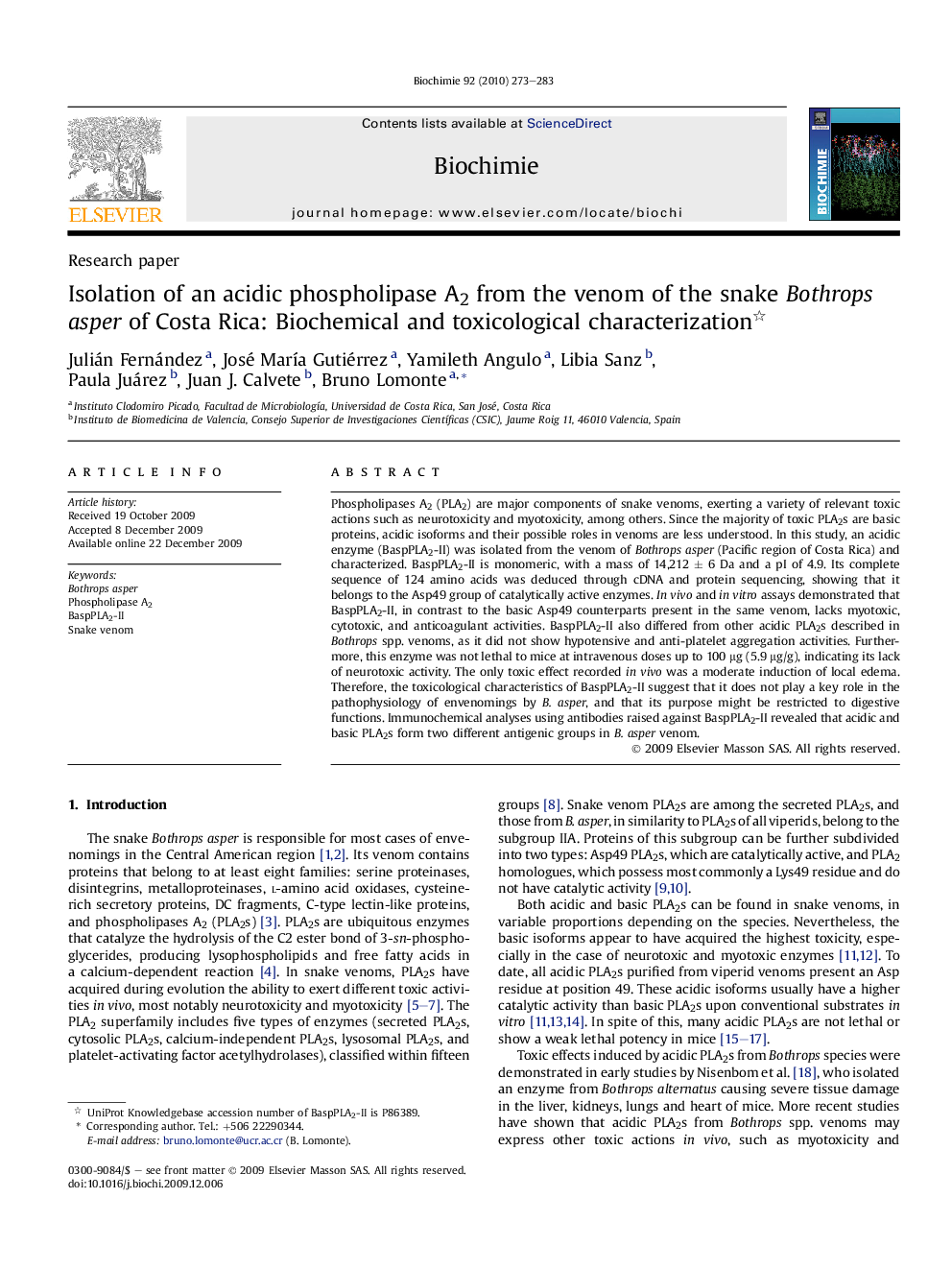| Article ID | Journal | Published Year | Pages | File Type |
|---|---|---|---|---|
| 1952901 | Biochimie | 2010 | 11 Pages |
Phospholipases A2 (PLA2) are major components of snake venoms, exerting a variety of relevant toxic actions such as neurotoxicity and myotoxicity, among others. Since the majority of toxic PLA2s are basic proteins, acidic isoforms and their possible roles in venoms are less understood. In this study, an acidic enzyme (BaspPLA2-II) was isolated from the venom of Bothrops asper (Pacific region of Costa Rica) and characterized. BaspPLA2-II is monomeric, with a mass of 14,212 ± 6 Da and a pI of 4.9. Its complete sequence of 124 amino acids was deduced through cDNA and protein sequencing, showing that it belongs to the Asp49 group of catalytically active enzymes. In vivo and in vitro assays demonstrated that BaspPLA2-II, in contrast to the basic Asp49 counterparts present in the same venom, lacks myotoxic, cytotoxic, and anticoagulant activities. BaspPLA2-II also differed from other acidic PLA2s described in Bothrops spp. venoms, as it did not show hypotensive and anti-platelet aggregation activities. Furthermore, this enzyme was not lethal to mice at intravenous doses up to 100 μg (5.9 μg/g), indicating its lack of neurotoxic activity. The only toxic effect recorded in vivo was a moderate induction of local edema. Therefore, the toxicological characteristics of BaspPLA2-II suggest that it does not play a key role in the pathophysiology of envenomings by B. asper, and that its purpose might be restricted to digestive functions. Immunochemical analyses using antibodies raised against BaspPLA2-II revealed that acidic and basic PLA2s form two different antigenic groups in B. asper venom.
